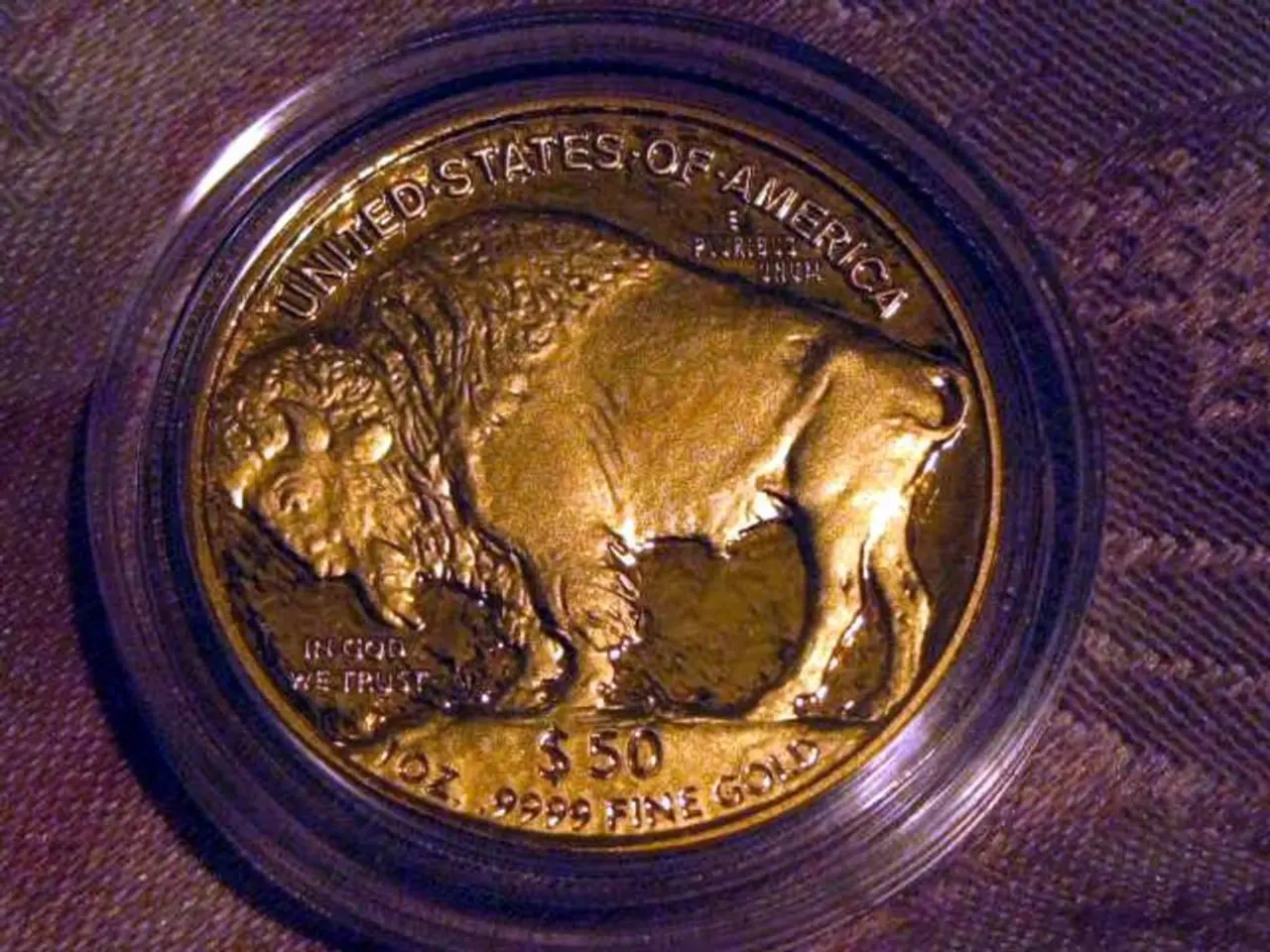Slump in the Dollar Index: Have You Readied Your Investment Profile?
Headline: International Investors Navigate Weakening U.S. Dollar: Strategies and Recommended Stock Approaches
The U.S. dollar's decline in 2025 has significant implications for international investors, triggering shifts in capital flows, currency risks, and trade effects. In response, a diversified portfolio strategy is recommended, with a focus on commodities, foreign equities, and alternative assets to hedge against this trend.
Currency Risk and Reduced Dollar Returns
International investors holding dollar-denominated assets see lower returns when converting dividends or income back to their local currencies due to the weakened dollar. This currency risk may prompt them to reduce U.S. exposure or hedge currency positions.
Shift in Capital Flows
There has been a marked inflow into non-U.S. assets such as European equities and commodities, and an outflow from U.S. equity funds. This shows investor preference shifting toward markets benefiting from dollar weakness.
Trade and Economic Effects
The lowered dollar enhances the competitiveness of American exporters but raises input costs for U.S. importers, which could affect corporate earnings unevenly across sectors. Emerging markets also benefit from reduced dollar-denominated debt burdens.
Global Monetary and Political Risks
A declining dollar may lead to increased currency competition (currency wars) and fragmentation of the global monetary system into blocs, raising global financial risk.
Recommended Stock and Investment Approaches to Hedge Dollar Decline
- Commodity Producers and Energy Companies: These sectors historically perform well in a weak dollar environment since commodities are dollar-priced but benefit from rising global demand and prices.
- Mining and Precious Metals: Precious metals and mining companies often serve as currency hedges. Gold prices have reached all-time highs, reflecting safe-haven demand.
- International Equities: Increasing allocation to foreign stocks, especially in countries or regions with strong current accounts and currencies that appreciate against the dollar, can offset dollar depreciation risk.
- Treasury Inflation-Protected Securities (TIPS): These fixed-income instruments help hedge inflation that often accompanies currency weakness.
- Private Equity and Alternative Assets: With currency and market volatility, private equity has attracted flows due to historically strong performance and diversification benefits. However, they carry liquidity and macroeconomic risks.
- Reducing Technology and Growth Stocks Exposure: Growth sectors that benefited from a strong dollar may underperform during its decline, so tactical reduction can hedge downside risk.
Summary of Specific Recommendations
| Category | Rationale | Examples/Approach | | ------------------------------- | --------------------------------------- | ------------------------------------------ | | Commodity Producers & Energy | Benefit from rising commodity prices | Energy companies, oil & gas producers | | Mining & Precious Metals | Hedge against currency devaluation | Gold, silver miners, metal ETFs | | International Equities | Currency diversification, stronger foreign currencies | European and Asian stocks, ETF funds | | Treasury Inflation-Protected Securities (TIPS) | Inflation hedge as dollar weakens | U.S. TIPS funds | | Private Equity & Alternative Assets | Diversification and strong returns | Private equity funds in 401(k) allocations | | Technology & Growth Stocks | Reduce exposure due to vulnerability to dollar weakness | Selective trimming of US tech holdings |
Notable Companies
- Alphabet (GOOGL) and Pfizer (PFE) have sold bonds denominated in euros, valued at almost $100 billion.
- Banco Bradesco (BBD), a Brazilian bank, has risen 56% this year but still has a low valuation.
- UBS Group (UBS) is a Zurich-based bank with a strong wealth-management component and has tripled in the past five years.
- Inflation appears to be constrained, but the economy over the past few years has been strong.
- The stock of Netflix (NFLX) has significant exposure to international sales, with 59% of its sales abroad.
- Zurich Insurance Group (ZURVY) has risen in value lately, and Swisscom (SCMWY), a telecom company with the largest fiber-optic network in the country, has also been rising smartly.
In conclusion, a weakening U.S. dollar in 2025 encourages international investors to diversify into commodities, foreign equities, and alternatives while hedging currency risk through specific fixed-income instruments and selective sector allocations. Each option carries distinct risk profiles, so combining these strategies aligned with individual risk tolerance and market views is recommended.
- As the U.S. dollar weakens, some companies like Alphabet (GOOGL) and Pfizer (PFE) have sold bonds denominated in euros, indicating a strategy to mitigate the potential risks associated with a declining dollar.
- The declining dollar can also benefit certain companies, such as Banco Bradesco (BBD) in Brazil, which has seen a 56% increase this year but still has a low valuation.
- To hedge against currency devaluation, investments in precious metals and mining companies, like gold and silver miners, are often considered due to their safe-haven status.
- In addition to diversifying into commodities and foreign equities, investors can turn to alternative assets like private equity funds for their historically strong performance and diversification benefits. However, private equity carries liquidity and macroeconomic risks.




